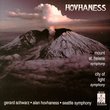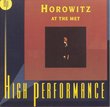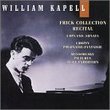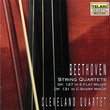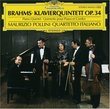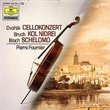| All Artists: Johannes Brahms, Jean-Bernard Pommier Title: Brahms: Violin Sonatas; Cello Sonatas Members Wishing: 0 Total Copies: 0 Label: Virgin Records Us Release Date: 5/5/1998 Genre: Classical Styles: Chamber Music, Instruments, Strings, Symphonies Number of Discs: 2 SwapaCD Credits: 2 UPC: 724356141520 |
Search - Johannes Brahms, Jean-Bernard Pommier :: Brahms: Violin Sonatas; Cello Sonatas
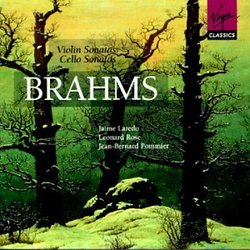 | Johannes Brahms, Jean-Bernard Pommier Brahms: Violin Sonatas; Cello Sonatas Genre: Classical
|
Larger Image |
CD DetailsSimilarly Requested CDs |
CD ReviewsExcellent Cello Sonatas kv581 | Durham, NC United States | 03/17/2001 (5 out of 5 stars) "I bought these CDs mainly for the cello sonatas, so I'll review those only. First, the technical details. The recording is somewhat close, so the cello sound can be slightly rough at times (you can sometimes hear the string grunt right before the notes). On the other hand, because of the close recording, the details are never lost.The performance itself is every bit as satisfying as other leading versions on the market. Unlike some performances that are cello dominated (or even piano dominated, yuck!), Rose and Pommier assume equal partnership. Rose being the unassuming musician, the tempos are in general broader than most other recordings. This is the pastoral Brahms, not the aggressive Brahms.I prefer this recording to either of Ma/Ax collaborations. One recording that does equal (or even surpass) this current item, though, is the Rostropovich/Serkin recording on DG. Now there's an aggressive Brahms! Still, if relaxed interpretation is what you seek, give Rose/Pommier a try." The Brahms Violin Sonatas and Cello Sonatas Robin Friedman | Washington, D.C. United States | 12/20/2004 (5 out of 5 stars) "For sixty-three years, the National Gallery of Art in Washington D.C. has presented a series of free Sunday evening concerts. The accoustics are not the best, but the music and the performers are almost always outstanding. It is one of my favorite venues to hear music. I recently heard a Gallery concert presented together with the Embassy of Norway. Violinist Henning Kraggerud and pianist Helge Kjekshus, two fine young musicians beautifully performed the three Brahms sonatas for violin and piano. It was a concert to be remembered.
Under the inspiration of that memorable evening, I have been listening to my CD of these works. My CD, under review here, is a set of two which includes the three Brahms violin and piano sonatas and the two cello and piano sonatas. It is almost too rich a selection of music for a short review. Unlike my National Gallery concert, the CD is not free. But it is inexpensive for the beautiful music it contains and a bargain. The three violin sonatas are performed by Jaime Laredo, violin, and Jean-Bernard Pommier, piano. The first and second violin sonatas are renowned for their lyricism. They are Brahms at his most melodic, almost transmitting his lieder into chamber music. Both of these sonatas are in three movements. The first violin sonata, in G major, opus 78, is frequently called "Regenlied" (rain) because the third movement is based upon a Brahms song of that name. You can hear the drop-drop of the rain in the piano -- with the violin taking the vocal line -- followed by a brief stormy outburst. The first movement of this work is almost all lyricism with the violin singing over a chordal accompanyment while the second movement is more somber and reflective and is cast in the form of a funeral march. The second sonata too, in A major opus 100 is lyrical in character with qualities of improvisation and reverie. Its melodies could well be put into art song (some of theme were). The tempos are moderately paced, gentle, and singing with a lively minor-key dance highlighting the second movement. Brahms third violin sonata in D-minor, opus 100, is in four movements and, in the first and final movements, a more dramatic work than its companions. The first movement is full of fire and passion particularly in the development which consists of a varied figure in the violin over a repeated piano line. The second and third movements, however, are disarmingly lyrical. The finale returns to bravura writing with large, crashing chords in the piano and sweeping dramatic themes in the violin. The two Brahms cello sonatas are performed by Leonard Rose, cello and, again, Jean-Bernard Pommier on the piano. These two works are much more impassioned and complex than the three violin sonatas, and Brahms uses every possibility of the cello, from the bottom to the heights of its register. The three-movement cello sonata no. 1 in e-minor opus 34 is the earliest work on this CD. The first movement is of great length (much longer than the remaining movements together) and emphasizes the lower register of the cello as it broods over huge chords in the piano. The second movement is a minuet with a hollow, questioning theme in the cello. The trio is based on a longer, more melodic theme surrounded by piano filigree. The third movement is a close-textured and traditional fugue which remains unmistakably in the voice of Brahms. My favorite work on this CD remains the second cello sonata in F major, opus 99, a late work of Brahms in four movements. The opening movement is full of passion and desire as it begins with a repeated piano tremolo and an outburst by the cello. The piano writing again takes on a percussive quality with large crashing chords under a highly emotive cello line. The opening of the second movement has almost a blusey feeling with a deliberate piano line under a plucked cello. The movement progresses to assume a songlike character. The third movement is full of turbulence and virtuosic writing for both instruments. The finale is more relaxed in character and is a rondo with a flowing theme. Each of these works is a treasure of chamber music. This is music to be loved over repeated hearings. " |

 Track Listings (11) - Disc #1
Track Listings (11) - Disc #1